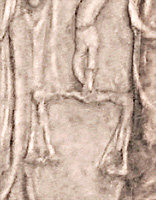

|
Trutina: Roman Balance Scales, Aequitas, and Moneta |
The small, hand-held balance scales used by bankers and moneychangers became a potent symbol on Roman coins. In the modern world we are familiar with this type of scales as a legal symbol, usually carried by a female personfication of Justice. In Rome, however, the symbolic value of these scales always retained a practical association with money and commerce. From the mid-first century CE emperors began minting coins with the goddess Aequitas, often identified as a quality of the emperor, AEQVITAS AVG or AVGVSTI. Aequitas means essentially “evenness, flatness, symmetry,” for which a balance scale provides an excellent visual representation; the emperors apparently used this personified goddess to emphasize their guarantee of fairness and equity with regard to the entire Roman monetary system. The goddess is usually shown also holding a cornucopia, which indicates the abundance and wealth produced by an economy in which the weights of coins are reliable and the merchants employ honestly balanced scales.
It is not surprising that Vespasian frequently used this symbolism on his coins, to emphasize his restoration of balance in the Roman economy after the upheavals caused by the excesses of Nero and the civil wars that followed his death. This double-struck denarius was issued in 70 CE:
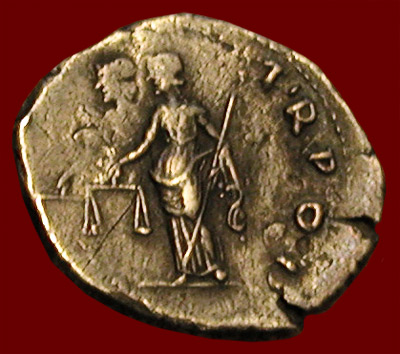
His son, Titus continued this theme with a copper as issued in 80 CE that explicitly identified the goddess:
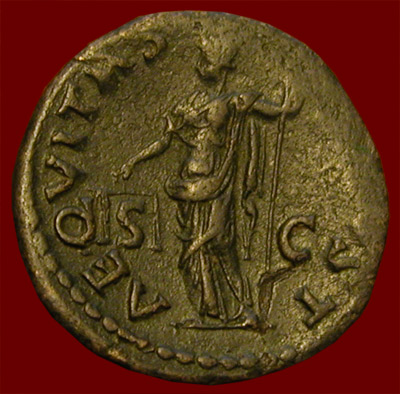
Nerva, whose fair dealing was well known, also emphasized this quality on his coinage, for example in this denarius issued near the end of 96 CE:
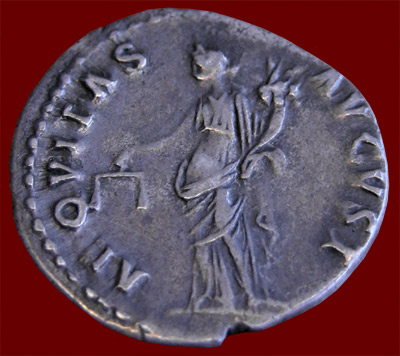
Trajan's goddess is seated and not named, but by this time (108 CE) the Roman public was sufficiently familiar with the attributes to recognize Aequitas:
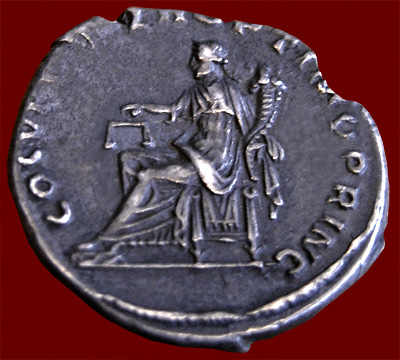
As can be seen on this sestertius of Hadrian, dating from 123 CE, the goddess Moneta, personification of the Mint and the entire monetary system, was depicted with the same attributes as Aequitas, trutina and cornucopia:
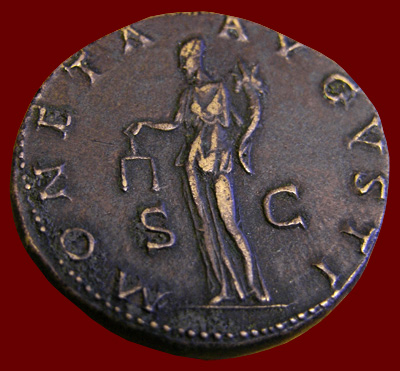
Coins photographed with kind permission of the Museum of Cultural History, University of Oslo.
Close this window when finished.